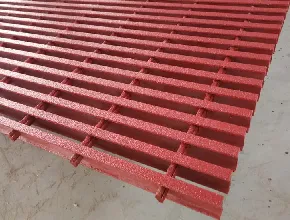loading...
- No. 9, Xingyuan South Street, Dongwaihuan Road, Zaoqiang County, Hengshui, Hebei, China
- admin@zjcomposites.com
- +86 15097380338
- Welcome to visit our website!
frp profiles
Understanding FRP Profiles A Marvel of Modern Materials
Fiber Reinforced Polymer (FRP) profiles are rapidly gaining traction in various industries due to their unique properties and advantages. This article explores what FRP profiles are, their composition, applications, and the benefits they bring to engineering and construction.
What is FRP?
Fiber Reinforced Polymer is a composite material consisting of a polymer matrix reinforced with fibers, typically made of glass, carbon, or aramid. These fibers provide extraordinary strength and rigidity while the polymer binds the fibers together, offering resistance to environmental degradation. The combination results in a lightweight, strong material that has revolutionized many sectors, particularly construction, automotive, aerospace, and marine industries.
Composition of FRP Profiles
An FRP profile is essentially a structural component made from FRP materials. The profiles are created by pultrusion, a manufacturing process where fibers are drawn through a resin bath and then cured under heat to form strong, rigid shapes. This process allows for the production of various profiles such as beams, channels, and angles, which can be tailored to meet specific load-bearing requirements.
The ratio of fiber to resin is crucial in determining the overall properties of the FRP profile. High fiber content increases strength and stiffness, while an optimal resin matrix ensures durability against moisture, chemicals, and UV radiation.
Applications of FRP Profiles
The versatility of FRP profiles makes them suitable for a wide range of applications
1. Construction FRP profiles are used in buildings for structural reinforcement and innovative designs. They can replace conventional steel reinforcements, particularly in areas exposed to corrosive environments, such as coastal and industrial zones.
2. Transportation In the automotive and aerospace industries, FRP profiles contribute to lightweight vehicle construction, enhancing fuel efficiency and performance. Airplanes and cars with FRP components have proven to consume less fuel due to reduced weight.
3. Marine FRP profiles are a staple in boat construction. Their resistance to water and corrosion ensures longevity and reduced maintenance costs, making them ideal for hulls, decks, and structural components within marine vessels.
frp profiles

4. Wind Energy The renewable energy sector also benefits from FRP profiles. Wind turbine blades, made from advanced FRP materials, are designed to be lightweight yet strong enough to withstand high-stress conditions, contributing to more efficient energy generation.
Benefits of FRP Profiles
The advantages of FRP profiles are numerous, making them an attractive choice across multiple industries
- Lightweight Compared to traditional materials like steel and concrete, FRP profiles are significantly lighter, which reduces transportation costs and eases handling during installation.
- Corrosion Resistance FRP does not rust or corrode, which ensures a long service life, particularly in harsh environments. This property significantly lowers maintenance costs over time.
- High Strength-to-Weight Ratio The combination of minimal weight and impressive strength allows for designs that require less material, reducing overall project costs.
- Design Flexibility The ability to mold FRP into complex shapes encourages innovation in design, enabling engineers and architects to create unique structural elements.
- Thermal and Electrical Insulation FRP materials offer good thermal and electrical insulating properties, making them ideal for applications where electrical conductivity or heat transfer is a concern.
Challenges and Considerations
Despite their numerous benefits, FRP profiles also pose certain challenges. The initial cost of FRP can be higher than traditional materials, which may deter some investors. Additionally, recycling FRP is more challenging than traditional materials, raising sustainability concerns. However, ongoing advancements in recycling technologies and cost reduction strategies may mitigate these issues in the future.
Conclusion
FRP profiles exemplify the shifts occurring in material science and engineering. They represent a blend of strength, versatility, and innovation, making them a game-changer in many sectors. As industries continue to evolve in response to environmental challenges and sustainability goals, FRP profiles are likely to play an even more significant role in the future. Understanding and embracing the benefits of these advanced materials will undoubtedly open new avenues for creativity in design and functionality across various applications.
-
The Rise of FRP Profiles: Strong, Lightweight, and Built to LastNewsJul.14,2025
-
SMC Panel Tanks: A Modern Water Storage Solution for All EnvironmentsNewsJul.14,2025
-
GRP Grating: A Modern Solution for Safe and Durable Access SystemsNewsJul.14,2025
-
Galvanized Steel Water Tanks: Durable, Reliable, and Ready for UseNewsJul.14,2025
-
FRP Mini Mesh Grating: The Safer, Smarter Flooring SolutionNewsJul.14,2025
-
Exploring FRP Vessels: Durable Solutions for Modern Fluid HandlingNewsJul.14,2025
-
GRP Structures: The Future of Lightweight, High-Performance EngineeringNewsJun.20,2025
